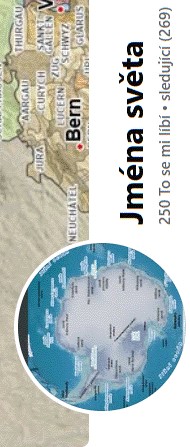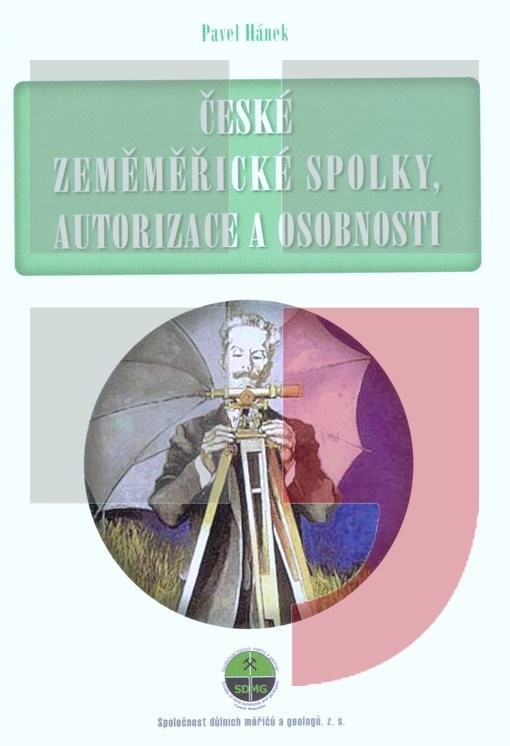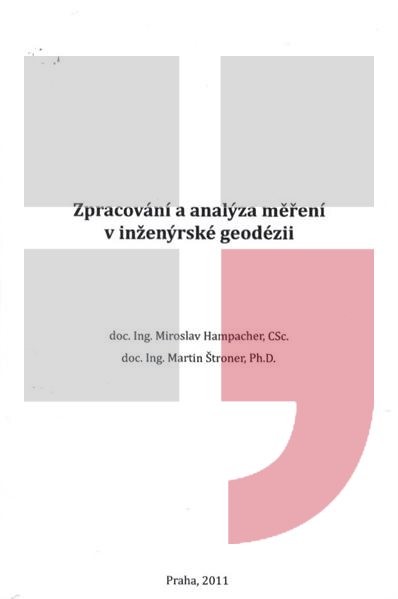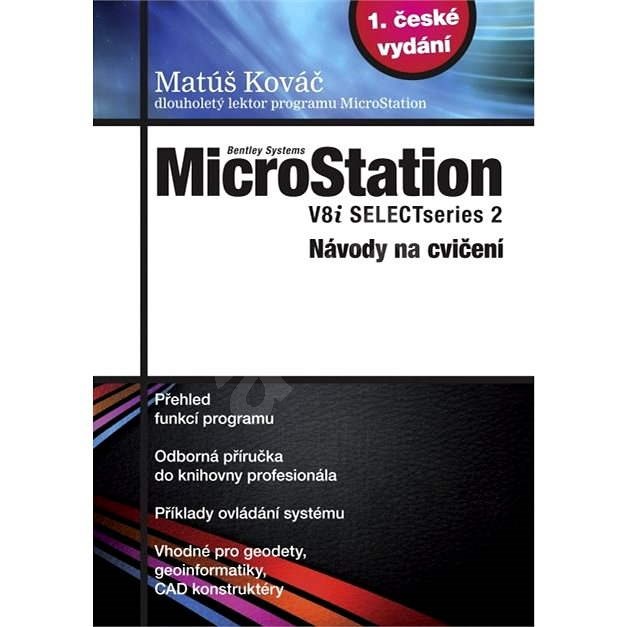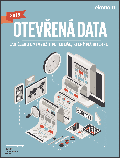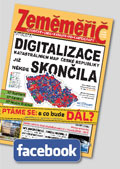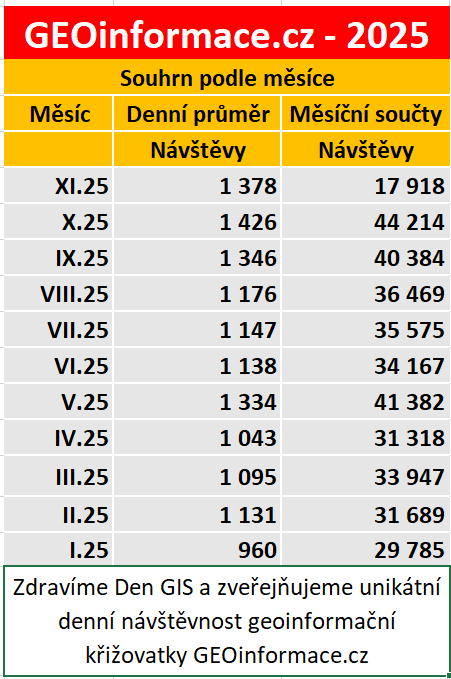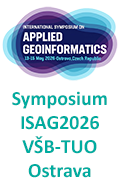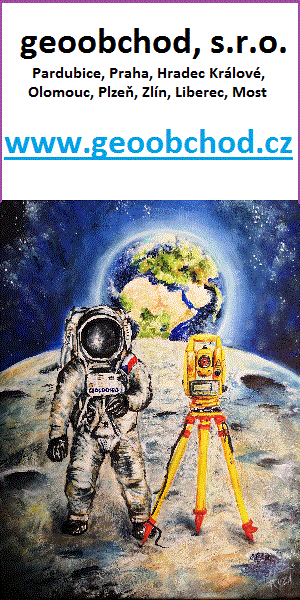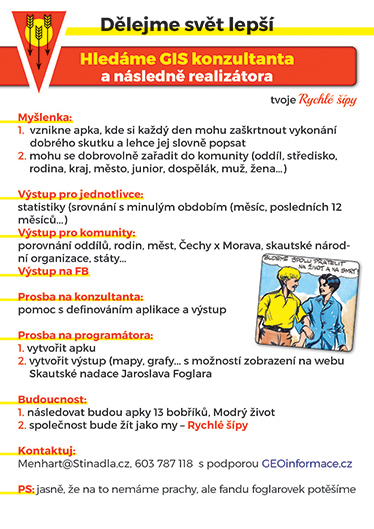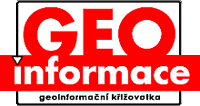zprávy
zdroje zpráv:20210129 – volné místo - Rada/odborný rada v OMaK kanceláře ředitele KÚ na Katastrálním úřadu pro ÚK
28.1.2021 7:19 ČÚZK - předpisy a opatření Katastrální úřad pro Ústecký kraj zveřejnil novou aktualitu: Nabídka volného pracovního místa - Rada/odborný rada v oddělení metodiky a kontroly kanceláře ředitele katastrálního úřadu na KÚ pro Ústecký krajMAPPS Presents the 2020 Geospatial Products and Services Excellence Awards
27.1.2021 21:35 GISCafe.com Webcasts-Webinars Orlando, FL (January 27, 2021) MAPPS honored members with the 2020 Geospatial Excellence Awards as part of their 14th annual Awards Presentation that …Developers are invited to the 2021 Joint ASF – OGC – OSGeo Code Sprint
27.1.2021 21:27 GISCafe.com Webcasts-Webinars
Code sprint will advance multiple ASF, OSGeo projects, and OGC standards - including OGC API standards, the building blocks …
Esri Launches ArcGIS Platform
27.1.2021 18:04 GISCafe.com Webcasts-Webinars Comprehensive Location Services, Data, and Mapping Tools Are Available to DevelopersREDLANDS, Calif. — (BUSINESS WIRE) — January 27, …
Kongsberg Geospatial Improves BVLOS Drone Operations Safety with a "Horizonless Air Picture"
27.1.2021 18:04 GISCafe.com Webcasts-Webinars Kongsberg Geospatial, Aireon and uAvionix to demonstrate the world's first integration of Space-based and local ADS-B sensors to provide a fused …D-Fend Solutions Achieves Significant Growth as it Triples Installed Base of its Takeover-Based, Counter-Drone Solution in 2020
27.1.2021 17:00 GISCafe.com Webcasts-Webinars Heightened concern about drone incidents, combined with shortcomings of traditional C-UAS technologies, leads to increased demand for D-Fend …Budoucnost podpory aplikace ArcMap
27.1.2021 15:45 ARCDATAArcGIS ve verzi 10.8.1 je poslední verzí, která obsahuje ArcMap, a tato a k ní přidružené aplikace budou podporovány do 1. března 2026, jak je uvedeno v produktovém životním cyklu pro ArcMap. ArcMap bude i po 1. březnu 2026 možné dál využívat, dokud bude mít uživatel platnou licenci. Veškerý vývoj pro desktop je však zaměřen na ArcGIS Pro a všem uživatelům je doporučeno svou práci do ArcGIS Pro zmigrovat.
Jaký software je tímto ovlivněn?
- ArcMap,
- ArcCatalog,
- nadstavby pro ArcMap (včetně ArcScene a ArcGlobe),
- ArcReader,
- desktopová část ArcObjects SDK a ArcGIS Engine.
Bude Esri vydávat opravné balíčky pro verzi ArcMap 10.8.x?
Ano. Přestože 10.8.x je poslední verzí, Esri bude nadále přidávat opravné balíčky a reagovat na bezpečnostní hrozby ze systémů třetích stran, jak je uvedeno v životním cyklu ArcMap.
Jaké informační zdroje jsou dostupné pro zákazníky migrující z ArcMap do ArcGIS Pro?
S migrací a s úvodem do práce v ArcGIS Pro vám mohou pomoci naše školení:
- Migrace z ArcMap do ArcGIS Pro, dvoudenní kurz s lektorem
- ArcGIS Pro: základy a pracovní postupy, třídenní kurz s lektorem
Využít můžete i e-learningové kurzy Esri v angličtině:
Další praktické informace:
Vláda schválila posun harmonogramu zavádění koncepce BIM v ČR
27.1.2021 14:07 BIM NewsPetr Serafín uveřejnil dne 26. ledna 2021 na webu Ministerstvu průmyslu a obchodu zprávu o aktualizaci harmonogramu zavádění koncepce BIM v ČR. Vyjádření MPO Realizace Koncepce zavádění metody BIM v České republice, schválená usnesením vlády č. 682/2017 (dále jen „Koncepce“), pokračuje již čtvrtým rokem. Vláda v pondělí 18. ledna 2021 vzala svým usnesení č. 41 […]
The post Vláda schválila posun harmonogramu zavádění koncepce BIM v ČR appeared first on BIM News.
Entrepreneurship Day to showcase the most innovative Galileo-based solutions
27.1.2021 9:51 European GNSS Agency
The European GNSS Agency (GSA) is hosting a virtual Entrepreneurship Day on 2 March to showcase the most innovative Galileo-based solutions delivering cutting-edge services across a range of application areas. At the event, the finalists of MyGalileoSolution and MyGalileoDrone competitions will pitch in front of investors and venture capitalists, demonstrating novel drone solutions, enhanced human and Internet of Things ideas and innovative mobile applications. Interested in inspirational start-up pitches? Register here.
GNSS is driving innovation and supporting new and disruptive technologies in a wide range of sectors. Start-ups have been particularly enthusiastic in embracing the potential offered by the EU Space Programme to develop new applications and services, as can be seen from the entries in the #MyGalileoDrone and #MyGalileoSolution competitions, organised by the GSA.
Space for EU priorities
Entrepreneurship Day will present some of the most innovative projects from these competitions. The half-day event, which will take place online, will bring together investors, accelerators, the start-up community, tech influencers, GNSS innovators and everybody interested in space to hear from around 80 EU start-ups about how their Galileo-based innovations, developed with support from the GSA, are meeting important societal challenges and supporting the EU strategic agenda.
Read this: Next generation EU Space apps pitching at EUSW Investors Forum
In particular, teams from MyGalileoDrone selected to participate include solutions that support EU priorities like the European Green Deal, Europe’s digital strategy, resilience and recovery, and promoting the European way of life. The MyGalileoSolution ideas also address strategic challenges, such as crisis and emergency response, smart transport, digitalisation and cybersecurity.
Competition winners to be announced
The event will culminate with the announcement of the winners of the MyGalileoDrone and MyGalileoSolution competitions. At the online awards ceremony, the six MyGalileoSolution finalists will receive awards ranging from EUR 15,000 to EUR 60,000, while the four MyGalileoDrone finalists will share a prize pot of EUR 230,000, with prizes ranging from EUR 30,000 to EUR 100,000.
Make sure to attend, to get inspiration from the worthy winners and from the other participating start-ups, and learn which MyGalileo start-up is most highly rated by the investor network. If you are interested in space and want to learn how space-based innovations are responding to current and future challenges, then Entrepreneurship Day is a not-to-be-missed event. For more information, click here.
Media note: This feature can be republished without charge provided the European GNSS Agency (GSA) is acknowledged as the source at the top or the bottom of the story. You must request permission before you use any of the photographs on the site. If you republish, we would be grateful if you could link back to the GSA website (http://www.gsa.europa.eu).
Entrepreneurship Day to showcase the most innovative Galileo-based solutions
27.1.2021 9:51 European GNSS Agency
The European GNSS Agency (GSA) is hosting a virtual Entrepreneurship Day on 2 March to showcase the most innovative Galileo-based solutions delivering cutting-edge services across a range of application areas. At the event, the finalists of MyGalileoSolution and MyGalileoDrone competitions will pitch in front of investors and venture capitalists, demonstrating novel drone solutions, enhanced human and Internet of Things ideas and innovative mobile applications. Interested in inspirational start-up pitches? Register here.
GNSS is driving innovation and supporting new and disruptive technologies in a wide range of sectors. Start-ups have been particularly enthusiastic in embracing the potential offered by the EU Space Programme to develop new applications and services, as can be seen from the entries in the #MyGalileoDrone and #MyGalileoSolution competitions, organised by the GSA.
Space for EU priorities
Entrepreneurship Day will present some of the most innovative projects from these competitions. The half-day event, which will take place online, will bring together investors, accelerators, the start-up community, tech influencers, GNSS innovators and everybody interested in space to hear from around 80 EU start-ups about how their Galileo-based innovations, developed with support from the GSA, are meeting important societal challenges and supporting the EU strategic agenda.
Read this: Next generation EU Space apps pitching at EUSW Investors Forum
In particular, teams from MyGalileoDrone selected to participate include solutions that support EU priorities like the European Green Deal, Europe’s digital strategy, resilience and recovery, and promoting the European way of life. The MyGalileoSolution ideas also address strategic challenges, such as crisis and emergency response, smart transport, digitalisation and cybersecurity.
Competition winners to be announced
The event will culminate with the announcement of the winners of the MyGalileoDrone and MyGalileoSolution competitions. At the online awards ceremony, the six MyGalileoSolution finalists will receive awards ranging from EUR 15,000 to EUR 60,000, while the four MyGalileoDrone finalists will share a prize pot of EUR 230,000, with prizes ranging from EUR 30,000 to EUR 100,000.
Make sure to attend, to get inspiration from the worthy winners and from the other participating start-ups, and learn which MyGalileo start-up is most highly rated by the investor network. If you are interested in space and want to learn how space-based innovations are responding to current and future challenges, then Entrepreneurship Day is a not-to-be-missed event. For more information, click here.
Media note: This feature can be republished without charge provided the European GNSS Agency (GSA) is acknowledged as the source at the top or the bottom of the story. You must request permission before you use any of the photographs on the site. If you republish, we would be grateful if you could link back to the GSA website (http://www.gsa.europa.eu).
Satnav antenna built for ends of the Earth
27.1.2021 9:07 ESA Navigation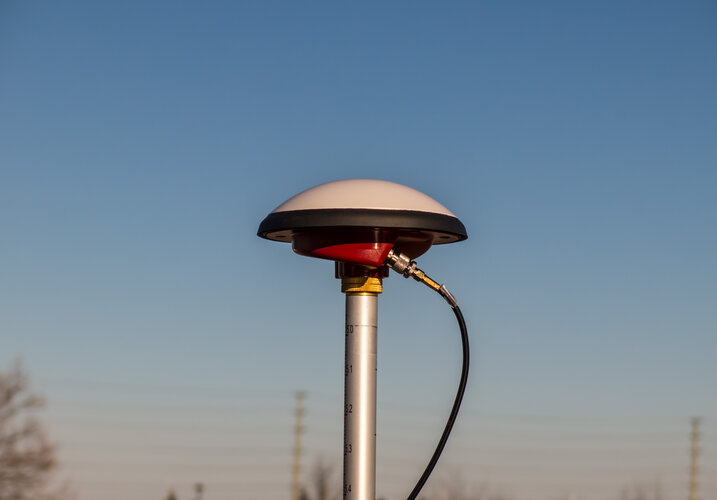
A new ESA-supported wide-bandwidth satnav antenna has been designed to receive both satellite and augmentation signals from anywhere in the sky, even down to just a couple of degrees above the horizon.
20200215 - omezení chodu úřadu
27.1.2021 9:04 ČÚZK /Urady/Katastralni-urady/Katastralni-urady/Katastralni-urad-pro-Karlovarsky-kraj/Katastralni-pracoviste/KP-Karlovy-Vary/O-uradu/Aktuality/20200127-omezeni-chodu-uradu20200215 - omezení chodu úřadu
27.1.2021 9:04 ČÚZK - předpisy a opatření Katastrální úřad pro Karlovarský kraj - Katastrální pracoviště Karlovy Vary zveřejnil novou aktualitu: Upozornění Katastrálního pracoviště!Po dobu nouzového stavu dochází na Katastrálním pracovišti Karlovy Vary k omezení služeb pro veřejnost.
Více informací: Získat podrobnější informace k omezení služeb pro veřejnost (soubor ve formátu PDF)
20200215 - omezení chodu úřadu
27.1.2021 9:04 ČÚZK - předpisy a opatření Katastrální úřad pro Karlovarský kraj - Katastrální pracoviště Karlovy Vary zveřejnil novou aktualitu: Upozornění Katastrálního pracoviště!Po dobu nouzového stavu dochází na Katastrálním pracovišti Karlovy Vary k omezení služeb pro veřejnost.
Více informací: Získat podrobnější informace k omezení služeb pro veřejnost (soubor ve formátu PDF)
20200127 - omezení chodu úřadu
27.1.2021 9:04 ČÚZK - předpisy a opatření Katastrální úřad pro Karlovarský kraj - Katastrální pracoviště Karlovy Vary zveřejnil novou aktualitu: Upozornění Katastrálního pracoviště!Po dobu nouzového stavu dochází na Katastrálním pracovišti Karlovy Vary k omezení služeb pro veřejnost.
Více informací: Získat podrobnější informace k omezení služeb pro veřejnost (soubor ve formátu PDF)
20200127 - omezení chodu úřadu
27.1.2021 9:04 ČÚZK /Urady/Katastralni-urady/Katastralni-urady/Katastralni-urad-pro-Karlovarsky-kraj/Katastralni-pracoviste/KP-Karlovy-Vary/O-uradu/Aktuality/20200127-omezeni-chodu-uraduWarren Equity Backed SSP Innovations Completes Fourth Add-On Acquisition
26.1.2021 22:07 GISCafe.com Webcasts-Webinars DENVER — (BUSINESS WIRE) — January 26, 2021 —SSP Innovations, LLC (“SSP” or the “Company”), a provider of IT services and …
2021 ASPRS ANNUAL CONFERENCE MARCH 29 - APRIL 2, 2021!
26.1.2021 19:47 GISCafe.com Webcasts-Webinars The American Society for Photogrammetry and Remote Sensing: The Imaging and Geospatial Information Society announces its 2021 Annual Conference to be …MEASURE Winter 2021 Product Release Expands Data Processing and Analytics Capabilities
26.1.2021 19:46 GISCafe.com Webcasts-Webinars WASHINGTON and AUSTIN, Texas, Jan. 26, 2021 — (PRNewswire) — MEASURE, a leading aerial intelligence company, has shipped a major …VISIMO to Advance UAV Technology Through Air Force STTR Award
26.1.2021 19:46 GISCafe.com Webcasts-Webinars PITTSBURGH, Jan. 26, 2021 — (PRNewswire) — VISIMO, in partnership with the University of Cincinnati (UC) Unmanned Aerial Vehicle …Rada / Odborný rada v oddělení dokumentace Katastrálního pracoviště Jičín
26.1.2021 17:59 ČÚZK - volná místa Katastrální úřad pro Královéhradecký kraj - Katastrální pracoviště Jičín vypisuje výběrové řízení na místo Rada / Odborný rada v oddělení dokumentace Katastrálního pracoviště JičínRada / Odborný rada v oddělení dokumentace Katastrálního pracoviště Jičín
26.1.2021 17:59 ČÚZK - předpisy a opatření Katastrální úřad pro Královéhradecký kraj - Katastrální pracoviště Jičínvypisuje výběrové řízení na místo
Rada / Odborný rada v oddělení dokumentace Katastrálního pracoviště Jičín
Rada / Odborný rada v oddělení dokumentace Katastrálního pracoviště Jičín
26.1.2021 17:59 ČÚZK /Urady/Katastralni-urady/Katastralni-urady/Katastralni-urad-pro-Kralovehradecky-kraj/Uredni-deska/Oznameni-a-jina-uredni-sdeleni/Volna-mista/Rada-Odborny-rada-v-oddeleni-dokumentace-Katas-(1)Bluesky LiDAR Used to Visualise Land Restoration on Queen’s Balmoral Estate
26.1.2021 17:26 GISCafe.com Webcasts-Webinars Leicestershire, UK, 25 January 2021 – Data collected from survey aircraft equipped with advanced laser scanners is being used by the James …Innoviz Technologies, Leading LiDAR Company, Announces Partnership with Macnica for Mass Adoption of InnovizOne in the Japanese Market
26.1.2021 17:25 GISCafe.com Webcasts-Webinars TEL AVIV, Israel, Jan. 25, 2021 — (PRNewswire) — Innoviz Technologies, an Israeli LiDAR company founded by former officers of Israel's …Juniper Systems Limited Releases New Uinta Software Worldwide
26.1.2021 17:25 GISCafe.com Webcasts-Webinars Summary:Uinta™, powerful data collection software from Juniper Systems Limited, is now available throughout EMEA and India, for field crews in …Getac's new S410 semi-rugged laptop boosts performance, graphics capability, and configurable options to enhance efficiency in demanding work environments
26.1.2021 17:25 GISCafe.com Webcasts-Webinars TAIPEI, Jan. 26, 2021 — (PRNewswire) — Getac today announces the launch of its next-generation S410 semi-rugged laptop, enabling …Velodyne Lidar Signs Multi-Year Sales Agreement with Emesent
26.1.2021 17:25 GISCafe.com Webcasts-Webinars Equipped with Velodyne Sensors, Emesent Autonomous Scanning System Makes Data Capture Fast and Simple for Forestry, Infrastructure, Mapping and Film …TuSimple and Aeva Partner to Deploy 4D LiDAR for Autonomous Trucking
26.1.2021 17:25 GISCafe.com Webcasts-Webinars Collaboration Strengthens TuSimple’s Self-Driving Capabilities on Path to ProductionAeva 4D LiDAR is the first sensing solution to provide …
S&P CoreLogic Case-Shiller Index Shows Annual Home Price Gains Climbed To 9.5% In November
26.1.2021 17:25 GISCafe.com Webcasts-Webinars NEW YORK, Jan. 26, 2021 — (PRNewswire) — S&P Dow Jones Indices today released the latest results for the S&P CoreLogic …Zveřejnění obsahu informací poskytnutých na žádost dle zákona č. 106/1999 Sb. za rok 2020
26.1.2021 15:37 ČÚZK /Urady/Katastralni-urady/Katastralni-urady/Katastralni-urad-pro-Zlinsky-kraj/Casto-hledane-informace/Poskytovani-informaci-106-1999-Sb/Zverejneni-obsahu-informaci-poskytnutych-na-za-(1)/Zverejneni-obsahu-informaci-poskytnutych-na-za-(3)Zveřejnění obsahu informací poskytnutých na žádost dle zákona č. 106/1999 Sb. za rok 2020
26.1.2021 15:37 ČÚZK - předpisy a opatření Katastrální úřad pro Zlínský krajzveřejňuje obsah informace poskytnutých na žádost dle zákona č. 106/1999 Sb. za rok
2020
New long-term dataset to analyse global fire trends
26.1.2021 15:30 ESA Observing the Earth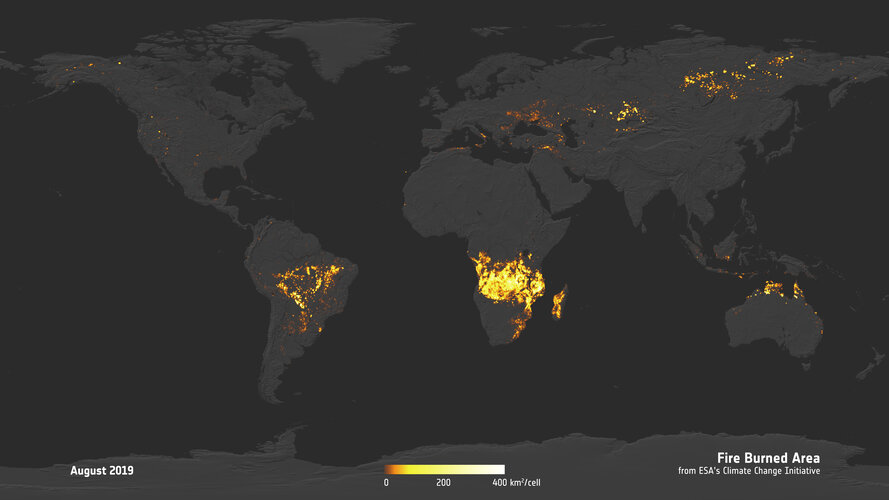
Fire affects an estimated four million square kilometres of Earth’s land each year and is responsible for releasing aerosols and greenhouse gases to the atmosphere. Understanding the influence that this has on atmospheric chemistry and representing these emissions in future climate predictions is, however, complex and remains poorly understood. To improve the situation, a team of scientists working as part of ESA’s Climate Change Initiative is using satellite observations, such as from Copernicus Sentinel-3, to gain a global view of land burned by fire.
Výroční zpráva dle zákona č. 106/1999 Sb. za rok 2020
26.1.2021 15:26 ČÚZK /Urady/Katastralni-urady/Katastralni-urady/Katastralni-urad-pro-Zlinsky-kraj/Vyrocni-zpravy/Vyrocni-zprava-dle-zakona-c-106-1999-Sb-za-rok-(3)Výroční zpráva dle zákona č. 106/1999 Sb. za rok 2020
26.1.2021 15:26 ČÚZK - předpisy a opatření Katastrální úřad pro Zlínský krajvydává výroční zprávu úřadu za rok
2020
Aktualizace Data200
26.1.2021 15:00 ČÚZK - Geoportál Aktualizace Data200Byla provedena pravidelná roční aktualizace datové sady Data200 (Digitální geografický model území ČR odpovídající přesností a stupněm generalizace měřítku 1:200 000), která je poskytována bezplatně jako otevřená data.
Nová aktualizace již zahrnuje změny RÚIAN, které od 1. 1. 2021 nastaly v souvislosti s účinností zákona č. 51/2020 Sb., o územně správním členění státu.
Aktualizována byla i příslušná prohlížecí služba.
Aktualizace Data200
26.1.2021 15:00 ČÚZK - Geoportál Aktualizace Data200Byla provedena pravidelná roční aktualizace datové sady Data200 (Digitální geografický model území ČR odpovídající přesností a stupněm generalizace měřítku 1:200 000), která je poskytována bezplatně jako otevřená data.
Nová aktualizace již zahrnuje změny RÚIAN, které od 1. 1. 2021 nastaly v souvislosti s účinností zákona č. 51/2020 Sb., o územně správním členění státu.
Aktualizována byla i příslušná prohlížecí služba.
Aktualizace Data200
26.1.2021 15:00 ČÚZK - Geoportál Aktualizace Data200Byla provedena pravidelná roční aktualizace datové sady Data200 (Digitální geografický model území ČR odpovídající přesností a stupněm generalizace měřítku 1:200 000), která je poskytována bezplatně jako otevřená data.
Nová aktualizace již zahrnuje změny RÚIAN, které od 1. 1. 2021 nastaly v souvislosti s účinností zákona č. 51/2020 Sb., o územně správním členění státu.
Aktualizována byla i příslušná prohlížecí služba.
Aktualizace Data200
26.1.2021 15:00 ČÚZK - Geoportál Aktualizace Data200Byla provedena pravidelná roční aktualizace datové sady Data200 (Digitální geografický model území ČR odpovídající přesností a stupněm generalizace měřítku 1:200 000), která je poskytována bezplatně jako otevřená data.
Nová aktualizace již zahrnuje změny RÚIAN, které od 1. 1. 2021 nastaly v souvislosti s účinností zákona č. 51/2020 Sb., o územně správním členění státu.
Aktualizována byla i příslušná prohlížecí služba.
Aktualizace Data200
26.1.2021 15:00 ČÚZK - Geoportál Aktualizace Data200Byla provedena pravidelná roční aktualizace datové sady Data200 (Digitální geografický model území ČR odpovídající přesností a stupněm generalizace měřítku 1:200 000), která je poskytována bezplatně jako otevřená data.
Nová aktualizace již zahrnuje změny RÚIAN, které od 1. 1. 2021 nastaly v souvislosti s účinností zákona č. 51/2020 Sb., o územně správním členění státu.
Aktualizována byla i příslušná prohlížecí služba.
Aktualizace Data200
26.1.2021 15:00 ČÚZK - Geoportál Aktualizace Data200Byla provedena pravidelná roční aktualizace datové sady Data200 (Digitální geografický model území ČR odpovídající přesností a stupněm generalizace měřítku 1:200 000), která je poskytována bezplatně jako otevřená data.
Nová aktualizace již zahrnuje změny RÚIAN, které od 1. 1. 2021 nastaly v souvislosti s účinností zákona č. 51/2020 Sb., o územně správním členění státu.
Aktualizována byla i příslušná prohlížecí služba.
Aktualizace Data200
26.1.2021 15:00 ČÚZK - Geoportál Aktualizace Data200Byla provedena pravidelná roční aktualizace datové sady Data200 (Digitální geografický model území ČR odpovídající přesností a stupněm generalizace měřítku 1:200 000), která je poskytována bezplatně jako otevřená data.
Nová aktualizace již zahrnuje změny RÚIAN, které od 1. 1. 2021 nastaly v souvislosti s účinností zákona č. 51/2020 Sb., o územně správním členění státu.
Aktualizována byla i příslušná prohlížecí služba.
Aktualizace Data200
26.1.2021 15:00 ČÚZK - Geoportál Aktualizace Data200Byla provedena pravidelná roční aktualizace datové sady Data200 (Digitální geografický model území ČR odpovídající přesností a stupněm generalizace měřítku 1:200 000), která je poskytována bezplatně jako otevřená data.
Nová aktualizace již zahrnuje změny RÚIAN, které od 1. 1. 2021 nastaly v souvislosti s účinností zákona č. 51/2020 Sb., o územně správním členění státu.
Aktualizována byla i příslušná prohlížecí služba.
Aktualizace Data200
26.1.2021 15:00 ČÚZK - Geoportál Aktualizace Data200Byla provedena pravidelná roční aktualizace datové sady Data200 (Digitální geografický model území ČR odpovídající přesností a stupněm generalizace měřítku 1:200 000), která je poskytována bezplatně jako otevřená data.
Nová aktualizace již zahrnuje změny RÚIAN, které od 1. 1. 2021 nastaly v souvislosti s účinností zákona č. 51/2020 Sb., o územně správním členění státu.
Aktualizována byla i příslušná prohlížecí služba.
Aktualizace Data200
26.1.2021 15:00 ČÚZK - Geoportál Aktualizace Data200Byla provedena pravidelná roční aktualizace datové sady Data200 (Digitální geografický model území ČR odpovídající přesností a stupněm generalizace měřítku 1:200 000), která je poskytována bezplatně jako otevřená data.
Nová aktualizace již zahrnuje změny RÚIAN, které od 1. 1. 2021 nastaly v souvislosti s účinností zákona č. 51/2020 Sb., o územně správním členění státu.
Aktualizována byla i příslušná prohlížecí služba.
Zveřejnění obsahu informací poskytnutých na žádost dle zákona č. 106/1999 Sb. za rok 20
26.1.2021 14:30 ČÚZK - předpisy a opatření Zeměměřický a katastrální inspektorát v Českých Budějovicíchzveřejňuje obsah informace poskytnutých na žádost dle zákona č. 106/1999 Sb. za rok
2021
Zveřejnění obsahu informací poskytnutých na žádost dle zákona č. 106/1999 Sb. za rok 20
26.1.2021 14:30 ČÚZK /Urady/Zememericke-a-katastralni-inspektoraty/Zememericke-a-katastralni-inspektoraty/Zememericky-a-katastralni-inspektorat-v-CB/Casto-hledane-informace/Poskytovani-informaci-106-1999-Sb/Zverejneni-obsahu-informaci-poskytnutych-na-za-(1)/Zverejneni-obsahu-informaci-poskytnutych-na-za-(2)Informace o výsledcích kontrol dle § 26 zákona č. 255/2012 Sb. za rok 20
26.1.2021 14:22 ČÚZK - předpisy a opatření Zeměměřický a katastrální inspektorát v Českých Budějovicíchvydává informace o výsledcích kontrol dle § 26 zákona č. 255/2012 Sb. za rok
2020
Prodloužení úředních hodin
26.1.2021 12:47 ČÚZK /Urady/Katastralni-urady/Katastralni-urady/Katastralni-urad-pro-Vysocinu/O-uradu/Aktuality/Prodlouzeni-urednich-hodinProdloužení úředních hodin
26.1.2021 12:47 ČÚZK - předpisy a opatření Katastrální úřad pro Vysočinuzveřejnil novou aktualitu: Vzhledem ke zvýšenému zájmu klientů o služby katastru byly prodlouženy úřední hodiny Katastrálního pracoviště Jihlava a Žďár nad Sázavou. Nový rozsah úředních hodin najdete na stránkách těchto pracovišť.
GIS města Brna oslavil 15 let!
26.1.2021 12:00 T-MAPYThe post GIS města Brna oslavil 15 let! appeared first on T-MAPY spol. s r.o..
Aktualizace dat v mapových aplikacích
26.1.2021 11:50 Jihočeský kraj Data katastru nemovitostí (DKM, KMD, KM-D) byla v mapových aplikacích i výdejním modulu aktualizována k 1. 1. 2021.Vláda ČR včera schválila novelu zákona o civilním letectví a půjde do Parlamentu ČR
26.1.2021 10:08 UAVAVláda ČR včera schválila novelu zákona o civilním letectví, včetně možnosti budoucího zavádění prostorů U-Space v ČR. Novelou se bude zabývat Parlament ČR a předpokládá se účinnost od poloviny roku 2021. https://www.mdcr.cz/Media/Media-a-tiskove-zpravy/Bezpecnejsi-provoz-bezpilotnich-letadel,-vlada-sch?returl=/Media
The post Vláda ČR včera schválila novelu zákona o civilním letectví a půjde do Parlamentu ČR appeared first on UAV Aliance pro bezpilotní letecký průmysl.
Úpravy aplikace Geoprohlížeč
26.1.2021 9:28 ČÚZK - Geoportál Úpravy aplikace GeoprohlížečByla provedena tato vylepšení funkcí aplikace Geoprohlížeč:
Ve widgetu Seznam vrstev lze nyní nastavit vlastní měřítko.
Ve widgetu Přidat vrstvy je nově umožněno přidat vlastní soubor i ve formátu GeoJSON.
K dispozici je nová prohlížecí služba pro Bodová pole a také nové vyhledávání v Bodových polích.
Při užití funkce Sdílení je nyní možné změnit podnázev Geoprohlížeče.
Úpravy aplikace Geoprohlížeč
26.1.2021 9:28 ČÚZK - Geoportál Úpravy aplikace GeoprohlížečByla provedena tato vylepšení funkcí aplikace Geoprohlížeč:
Ve widgetu Seznam vrstev lze nyní nastavit vlastní měřítko.
Ve widgetu Přidat vrstvy je nově umožněno přidat vlastní soubor i ve formátu GeoJSON.
K dispozici je nová prohlížecí služba pro Bodová pole a také nové vyhledávání v Bodových polích.
Při užití funkce Sdílení je nyní možné změnit podnázev Geoprohlížeče.
Úpravy aplikace Geoprohlížeč
26.1.2021 9:28 ČÚZK - Geoportál Úpravy aplikace GeoprohlížečByla provedena tato vylepšení funkcí aplikace Geoprohlížeč:
Ve widgetu Seznam vrstev lze nyní nastavit vlastní měřítko.
Ve widgetu Přidat vrstvy je nově umožněno přidat vlastní soubor i ve formátu GeoJSON.
K dispozici je nová prohlížecí služba pro Bodová pole a také nové vyhledávání v Bodových polích.
Při užití funkce Sdílení je nyní možné změnit podnázev Geoprohlížeče.
Úpravy aplikace Geoprohlížeč
26.1.2021 9:28 ČÚZK - Geoportál Úpravy aplikace GeoprohlížečByla provedena tato vylepšení funkcí aplikace Geoprohlížeč:
Ve widgetu Seznam vrstev lze nyní nastavit vlastní měřítko.
Ve widgetu Přidat vrstvy je nově umožněno přidat vlastní soubor i ve formátu GeoJSON.
K dispozici je nová prohlížecí služba pro Bodová pole a také nové vyhledávání v Bodových polích.
Při užití funkce Sdílení je nyní možné změnit podnázev Geoprohlížeče.
Úpravy aplikace Geoprohlížeč
26.1.2021 9:28 ČÚZK - Geoportál Úpravy aplikace GeoprohlížečByla provedena tato vylepšení funkcí aplikace Geoprohlížeč:
Ve widgetu Seznam vrstev lze nyní nastavit vlastní měřítko.
Ve widgetu Přidat vrstvy je nově umožněno přidat vlastní soubor i ve formátu GeoJSON.
K dispozici je nová prohlížecí služba pro Bodová pole a také nové vyhledávání v Bodových polích.
Při užití funkce Sdílení je nyní možné změnit podnázev Geoprohlížeče.
Úpravy aplikace Geoprohlížeč
26.1.2021 9:28 ČÚZK - Geoportál Úpravy aplikace GeoprohlížečByla provedena tato vylepšení funkcí aplikace Geoprohlížeč:
Ve widgetu Seznam vrstev lze nyní nastavit vlastní měřítko.
Ve widgetu Přidat vrstvy je nově umožněno přidat vlastní soubor i ve formátu GeoJSON.
K dispozici je nová prohlížecí služba pro Bodová pole a také nové vyhledávání v Bodových polích.
Při užití funkce Sdílení je nyní možné změnit podnázev Geoprohlížeče.
Úpravy aplikace Geoprohlížeč
26.1.2021 9:28 ČÚZK - Geoportál Úpravy aplikace GeoprohlížečByla provedena tato vylepšení funkcí aplikace Geoprohlížeč:
Ve widgetu Seznam vrstev lze nyní nastavit vlastní měřítko.
Ve widgetu Přidat vrstvy je nově umožněno přidat vlastní soubor i ve formátu GeoJSON.
K dispozici je nová prohlížecí služba pro Bodová pole a také nové vyhledávání v Bodových polích.
Při užití funkce Sdílení je nyní možné změnit podnázev Geoprohlížeče.
Úpravy aplikace Geoprohlížeč
26.1.2021 9:28 ČÚZK - Geoportál Úpravy aplikace GeoprohlížečByla provedena tato vylepšení funkcí aplikace Geoprohlížeč:
Ve widgetu Seznam vrstev lze nyní nastavit vlastní měřítko.
Ve widgetu Přidat vrstvy je nově umožněno přidat vlastní soubor i ve formátu GeoJSON.
K dispozici je nová prohlížecí služba pro Bodová pole a také nové vyhledávání v Bodových polích.
Při užití funkce Sdílení je nyní možné změnit podnázev Geoprohlížeče.
Úpravy aplikace Geoprohlížeč
26.1.2021 9:28 ČÚZK - Geoportál Úpravy aplikace GeoprohlížečByla provedena tato vylepšení funkcí aplikace Geoprohlížeč:
Ve widgetu Seznam vrstev lze nyní nastavit vlastní měřítko.
Ve widgetu Přidat vrstvy je nově umožněno přidat vlastní soubor i ve formátu GeoJSON.
K dispozici je nová prohlížecí služba pro Bodová pole a také nové vyhledávání v Bodových polích.
Při užití funkce Sdílení je nyní možné změnit podnázev Geoprohlížeče.
Úpravy aplikace Geoprohlížeč
26.1.2021 9:28 ČÚZK - Geoportál Úpravy aplikace GeoprohlížečByla provedena tato vylepšení funkcí aplikace Geoprohlížeč:
Ve widgetu Seznam vrstev lze nyní nastavit vlastní měřítko.
Ve widgetu Přidat vrstvy je nově umožněno přidat vlastní soubor i ve formátu GeoJSON.
K dispozici je nová prohlížecí služba pro Bodová pole a také nové vyhledávání v Bodových polích.
Při užití funkce Sdílení je nyní možné změnit podnázev Geoprohlížeče.
Ušetřete 33 % na CAD/CAM/CAE aplikaci Autodesk Fusion 360 (poslední den)
26.1.2021 1:00 CAD Studio K nejpopulárnějším a nejvyužívanějším nástrojům pro moderní strojírenskou konstrukci patří CAD/CAM/CAE aplikace Autodesk Fusion 360. Pro usnadnění přechodu konstruktérů na její komerční licenci proto nyní vyhlašujeme krátkodobou slevu 33 % - kompletní ...Novela zákona o civilním letectví schválena vládou a míří do parlamentu
25.1.2021 21:58 GeoBusinessVláda schválila novelu zákona o civilním letectví, která doplňuje nedávno zavedená evropská pravidla pro užívání dronů a je součástí koncepce fungování bezpilotních letadel v Česku. Zákon zavádí další kontrolní mechanismy či vyřizování dokladů on-line a navazuje na již funkční registraci provozovatelů a školení dálkově řídících pilotů dle evropských pravidel. „Chceme využívat drony a moderní technologie […]
The post Novela zákona o civilním letectví schválena vládou a míří do parlamentu appeared first on GeoBusiness.
Koncepce pozemkových úprav na období 2021 – 2025
25.1.2021 19:31 ZeměměřičStátní pozemkový úřad vydal Koncepci pozemkových úprav na období let 2021 – 2025, již druhou v řadě od svého vzniku v roce 2013. Pro následující období ztotožnil SPÚ svou činnost v oblasti pozemkových úprav v maximální možné míře se strategií Ministerstva zemědělství (MZe), zejména v oblasti prevence dopadů klimatických změn. Ing. Martin Vrba, ústřední ředitel Státního pozemkového úřadu, uvedl: „Nová […]
The post Koncepce pozemkových úprav na období 2021 – 2025 appeared first on Zeměměřič.
HawkEye 360 Announces Successful Deployment of Next-Generation Radio Frequency Sensing Satellites
25.1.2021 17:50 GISCafe.com Webcasts-Webinars Deployment underscores company's leadership within new industry of RF data collection and analyticsHERNDON, Va., Jan. 24, 2021 — (PRNewswire) …
Velodyne Lidar LIVE! Webinar Series Explores Autonomy in Smarter Cities, Caves, Airports and Disaster Response
25.1.2021 17:50 GISCafe.com Webcasts-Webinars Digital Learning Series Examines What’s Happening in Lidar and Mobility to Build a Safer, More Intelligent FutureSAN JOSE, Calif. — …
XAG Suggests Drones Could Outsmart Locust Swarms at Night
25.1.2021 17:50 GISCafe.com Webcasts-Webinars GUANGZHOU, China, Jan. 25, 2021 — (PRNewswire) — The UN warned last week that East Africa remains under the threat of desert …NV5 Geospatial and Oklahoma DoT to Showcase Innovative Applications of Aerial Lidar During TRB Annual Meeting
25.1.2021 17:49 GISCafe.com Webcasts-Webinars Groundbreaking Research Reveals Comparable Accuracy to Mobile Mapping and Enhanced Performance, Driving Greater Flexibility and New Applications for …Red Cat signs Letter of Intent to acquire Skypersonic Inc., the developer of a remote transoceanic piloting software system for the drone industry
25.1.2021 17:49 GISCafe.com Webcasts-Webinars Skypersonic Inc. also manufactures Skycopter, a miniaturized caged drone for industrial inspections and environmental monitoring.ORLANDO, Fla., Jan. …
Výroční zpráva dle zákona č. 106/1999 Sb. za rok 2020
25.1.2021 17:11 Zeměměřický úřad Zeměměřický úřadvydává výroční zprávu úřadu za rok
2020
Výroční zpráva dle zákona č. 106/1999 Sb. za rok 2020
25.1.2021 17:11 ČÚZK /Urady/Zememericky-urad/Zpravy-ZU/Vyrocni-zpravy-ZU-souhrne-informace/Vyrocni-zprava-dle-zakona-c-106-1999-Sb-za-rok-(2)Výroční zpráva dle zákona č. 106/1999 Sb. za rok 2020
25.1.2021 17:11 ČÚZK - předpisy a opatření Zeměměřický úřadvydává výroční zprávu úřadu za rok
2020
rada/odborný rada –vedoucí oddělení potvrzování geometrických plánů
25.1.2021 16:04 ČÚZK - předpisy a opatření Katastrální úřad pro hlavní město Prahuvypisuje výběrové řízení na místo
rada/odborný rada –vedoucí oddělení potvrzování geometrických plánů
KÚ-00479-2021-100-01001 87-Oznameni_o_vyhlaseni_VŘ-představený-PGP3_signed
25.1.2021 16:04 ČÚZK /Urady/Katastralni-urady/Katastralni-urady/Katastralni-urad-pro-hlavni-mesto-Prahu/Uredni-deska/Oznameni-a-jina-uredni-sdeleni/Volna-mista/DMS/KU-00479-2021-100-01001-87-Oznameni_o_vyhlaseni_VRKÚ-00479-2021-100-01001 87-Oznameni_o_vyhlaseni_VŘ-představený-PGP3_signed
25.1.2021 16:04 ČÚZK - předpisy a opatření Katastrální úřad pro hlavní město Prahu Katastrální pracoviště Prahavypisuje výběrové řízení na místo
rada/odborný rada – vedoucí oddělení potvrzování geometrických plánů
KÚ-00479-2021-100-01001 87-Oznameni_o_vyhlaseni_VŘ-představený-PGP3_signed
25.1.2021 16:04 ČÚZK - volná místa Katastrální úřad pro hlavní město Prahu Katastrální pracoviště Praha vypisuje výběrové řízení na místo KÚ-00479-2021-100-01001 87-Oznameni_o_vyhlaseni_VŘ-představený-PGP3_signedrada/odborný rada – vedoucí ekonomicko-správního oddělení
25.1.2021 16:04 ČÚZK - volná místa Katastrální úřad pro hlavní město Prahu vypisuje výběrové řízení na místo rada/odborný rada – vedoucí ekonomicko-správního odděleníKÚ-00479-2021-100-01001 87-Oznameni_o_vyhlaseni_VŘ-představený-PGP3_signed
25.1.2021 16:04 ČÚZK - předpisy a opatření Katastrální úřad pro hlavní město Prahu Katastrální pracoviště Prahavypisuje výběrové řízení na místo
KÚ-00479-2021-100-01001 87-Oznameni_o_vyhlaseni_VŘ-představený-PGP3_signed
rada/odborný rada –vedoucí oddělení potvrzování geometrických plánů
25.1.2021 16:04 ČÚZK /Urady/Katastralni-urady/Katastralni-urady/Katastralni-urad-pro-hlavni-mesto-Prahu/Uredni-deska/Oznameni-a-jina-uredni-sdeleni/Volna-mista/DMS/KU-00479-2021-100-01001-87-Oznameni_o_vyhlaseni_VRrada/odborný rada –vedoucí oddělení potvrzování geometrických plánů
25.1.2021 16:04 ČÚZK - volná místa Katastrální úřad pro hlavní město Prahu vypisuje výběrové řízení na místo rada/odborný rada –vedoucí oddělení potvrzování geometrických plánůrada/odborný rada – vedoucí ekonomicko-správního oddělení
25.1.2021 16:04 ČÚZK /Urady/Katastralni-urady/Katastralni-urady/Katastralni-urad-pro-hlavni-mesto-Prahu/Uredni-deska/Oznameni-a-jina-uredni-sdeleni/Volna-mista/DMS/KU-00479-2021-100-01001-87-Oznameni_o_vyhlaseni_VRrada/odborný rada – vedoucí ekonomicko-správního oddělení
25.1.2021 16:04 ČÚZK - předpisy a opatření Katastrální úřad pro hlavní město Prahuvypisuje výběrové řízení na místo
rada/odborný rada – vedoucí ekonomicko-správního oddělení
Rozpočet úřadu za rok 2021
25.1.2021 13:32 ČÚZK /Urady/Zememericke-a-katastralni-inspektoraty/Zememericke-a-katastralni-inspektoraty/Zememericky-a-katastralni-inspektorat-v-Praze/Rozpocet/Rozpocet-uradu-za-rok-2021Rozpočet úřadu za rok 2021
25.1.2021 13:32 ČÚZK - předpisy a opatření Zeměměřický a katastrální inspektorát v Prazevystavuje rozpočet úřadu za rok 2021
2021
20210119_Vedoucí oddělení právních vztahů k nemovitostem – odborný rada
25.1.2021 13:22 ČÚZK - předpisy a opatření Katastrální úřad pro Středočeský kraj - Katastrální pracoviště Benešov Vyhlášení výběrového řízení: Vedoucí oddělení právních vztahů k nemovitostem – odborný rada V části "Úřední deska", v sekci "Oznámení a jiná úřední sdělení" bylo vystaveno "Oznámení o vyhlášení výběrového řízení na obsazení služebního místa Vedoucí oddělení právních vztahů k nemovitostem – odborný rada"20210125_Odborný referent oddělení dokumentace KN
25.1.2021 13:22 ČÚZK /Urady/Katastralni-urady/Katastralni-urady/Katastralni-urad-pro-Stredocesky-kraj/Katastralni-pracoviste/KP-Kolin/O-uradu/Aktuality/20210113_odborny-rada,-reditel-Katastralniho-p-(1)20210119_Vedoucí oddělení právních vztahů k nemovitostem – odborný rada
25.1.2021 13:22 ČÚZK /Urady/Katastralni-urady/Katastralni-urady/Katastralni-urad-pro-Stredocesky-kraj/Katastralni-pracoviste/KP-Kolin/O-uradu/Aktuality/20210113_odborny-rada,-reditel-Katastralniho-p-(1)20210125_Odborný referent oddělení dokumentace KN
25.1.2021 13:22 ČÚZK - předpisy a opatření Katastrální úřad pro Středočeský kraj - Katastrální pracoviště Kolín Vyhlášení výběrového řízení: Odborný referent oddělení dokumentace KN V části "Úřední deska", v sekci "Oznámení a jiná úřední sdělení" bylo vystaveno "Oznámení o vyhlášení výběrového řízení na obsazení služebního místa Odborný referent oddělení dokumentace KN "Odborný referent oddělení dokumentace KN
25.1.2021 13:18 ČÚZK - předpisy a opatření Katastrální úřad pro Středočeský kraj - Katastrální pracoviště Kolínvypisuje výběrové řízení na místo Odborný referent oddělení dokumentace KN
Odborný referent oddělení dokumentace KN
Odborný referent oddělení dokumentace KN
25.1.2021 13:18 ČÚZK - volná místa Katastrální úřad pro Středočeský kraj - Katastrální pracoviště Kolín vypisuje výběrové řízení na místo Odborný referent oddělení dokumentace KNCloud-free crop maps foster sustainable farming
25.1.2021 13:00 ESA Observing the Earth
The rapidly rising global population, sustainability and climate change are among the challenges the agriculture sector faces in the business of producing food. Fortunately, information from satellites can help. A new commercial service – the first in the world – cleverly combines radar data from Copernicus Sentinel-1 and optical data from Copernicus Sentinel-2 to offer daily maps of field-scale crop biomass. Importantly, these maps are completely unimpeded by cloud cover. This new service allows farmers to better monitor and assess the growth of their produce, and, ultimately, make more effective decisions.
CAD & PDF = TurboCAD Deluxe + TurboPDF v akční ceně do 30. 9. 2021
25.1.2021 12:17 ŠPINAR - softwareVážení zákazníci,
máme pro Vás připravené programy TurboCAD Deluxe 27 CZ + TurboPDF CZ, které spojují CAD nástroje pro kreslení ve 2D / 3D prostoru včetně fotorealistických výstupů s editorem a převodníkem PDF dokumentů v akční ceně do 30. 09. 2021.
The post CAD & PDF = TurboCAD Deluxe + TurboPDF v akční ceně do 30. 9. 2021 appeared first on ŠPINAR – software.
CAD & PDF = TurboCAD + TurboPDF v akční ceně do 30. 09. 2021
25.1.2021 12:17 ŠPINAR - softwareVážení zákazníci,
máme pro Vás připravené programy TurboCAD Deluxe 27 CZ + TurboPDF CZ, které spojují CAD nástroje pro kreslení ve 2D / 3D prostoru včetně fotorealistických výstupů s editorem a převodníkem PDF dokumentů v akční ceně do 30. 09. 2021.
The post CAD & PDF = TurboCAD + TurboPDF v akční ceně do 30. 09. 2021 appeared first on ŠPINAR – software.
Odborný referent v oddělení právních vztahů k nemovitostem na Katastrálním pracovišti Znojmo
25.1.2021 12:09 ČÚZK - volná místa Katastrální úřad pro Jihomoravský kraj Katastrální pracoviště Znojmo vypisuje výběrové řízení na místo Odborný referent v oddělení právních vztahů k nemovitostem na Katastrálním pracovišti ZnojmoOdborný referent v oddělení právních vztahů k nemovitostem na Katastrálním pracovišti Znojmo
25.1.2021 12:09 ČÚZK - předpisy a opatření Katastrální úřad pro Jihomoravský kraj Katastrální pracoviště Znojmovypisuje výběrové řízení na místo
Odborný referent v oddělení právních vztahů k nemovitostem na Katastrálním pracovišti Znojmo
Odborný referent v oddělení právních vztahů k nemovitostem na Katastrálním pracovišti Znojmo
25.1.2021 12:09 ČÚZK /Urady/Katastralni-urady/Katastralni-urady/Katastralni-urad-pro-Jihomoravsky-kraj/Uredni-deska/Oznameni-a-jina-uredni-sdeleni/Volna-mista/DMS/Odborny-referent-v-oddeleni-pravnich-vztahu-k-nemoOur world is losing ice at record rate
25.1.2021 11:45 ESA Observing the Earth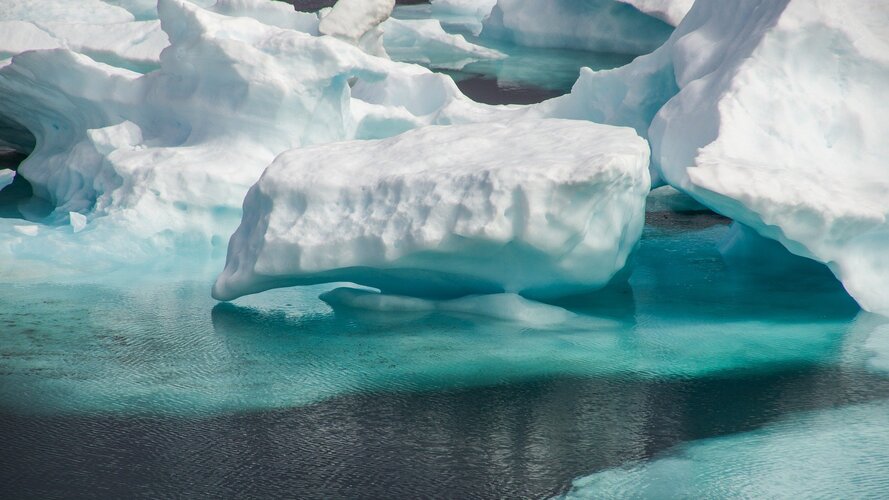
A research team – the first to carry out a survey of global ice loss using satellite data – has discovered that the rate at which ice is disappearing across the planet is speeding up. The findings also reveal that 28 trillion tonnes of ice was lost between 1994 and 2017 – equivalent to a sheet of ice 100 metres thick covering the whole of the UK.
Happy birthday Galileo Search And Rescue (SAR) Return Link Service!
25.1.2021 11:29 European GNSS Agency
A year after declared operational, the Galileo Return Link Service has been exceeding the performance levels committed in the SAR/Galileo Service Definition Document. With the recent upgrade in its European ground facilities, Galileo SAR is leading the way as an important component of the International Cospas-Sarsat Programme.
A year ago, the Galileo Return Link Service (RLS), a unique feature of Galileo Search & Rescue service was declared operational. The service is enabling people in distress to receive an automatic acknowledgement that their location has been determined and that help is on the way. With the activation of beacon capable of receiving Galileo RLS, the people in need of help will see a blue light blinking on top indicating the confirmation message. So far, Galileo is the only GNSS to offer such service to end users.
Exceeding performance targets
The end-to-end Return Link Message delivery is expected to take about 15 minutes.
The continuous monitoring of the Galileo SAR and the Return Link Service confirmed that the Service has been available 99.99% of the time, and that the Galileo RLS system took an average of 0.61 minutes (37 seconds) to deliver the automatic acknowledgement to the activated beacons as observed by the Galileo Reference Beacons (see Figure). Both performance parameters are significantly better than their target values of 95% and 15 minutes respectively. More information about performance and target can be found in the SAR Service Definition Document (SAR SDD) and the Quarterly Performance Reports.

RLS beacons steadily finding their way to the market
Upon the RLS operational declaration, different beacon manufacturers worldwide are integrating the Galileo RLS technology to newly produced devices and many of them are already in testing phase. Earlier in December, H2020 funded Helios Project launched the first Galileo-enabled PLB featuring the Return Link Service in 18 European countries. The consortium led by Orolia Maritime seeks to commercialize not only PLBs but also ELTs and EPIRBs to improve the search and rescue activities in the air, at sea and on land.
The Galileo Return Link Service increases survival rates by giving an important psychological boost to people in distress. Experts of Cospas-Sarsat estimated that the international SAR system, with the contribution of the Galileo Search and Rescue service, saves more than 2000 lives a year.
Media note: This feature can be republished without charge provided the European GNSS Agency (GSA) is acknowledged as the source at the top or the bottom of the story. You must request permission before you use any of the photographs on the site. If you republish, we would be grateful if you could link back to the GSA website (http://www.gsa.europa.eu).
Výběrové řízení pro studijní pobyty Erasmus+ [Katedra aplikované geoinformatiky a kartografie, byTopic]
25.1.2021 11:15 Katedra aplikované geoinformatiky a kartografie Přf UK Výběrové řízení pro studijní pobyty Erasmus+ v akademickém roce 2021/22 proběhne na katedře aplikované geoinformatiky a kartografie 10.3.2021. Termín pro odevzdání podkladů je 8.3.2021.Geograf/ka
25.1.2021 9:41 ČÚZK - předpisy a opatření Zeměměřický úřadvypisuje výběrové řízení na místo
Geograf/ka
Geograf/ka
25.1.2021 9:41 Zeměměřický úřad Zeměměřický úřadvypisuje výběrové řízení na místo
Geograf/ka
Geograf/ka
25.1.2021 9:41 ČÚZK - volná místa Zeměměřický úřad vypisuje výběrové řízení na místo Geograf/kaGeograf/ka
25.1.2021 9:41 ČÚZK /Urady/Zememericky-urad/Uredni-deska/Oznameni-a-jina-uredni-sdeleni/Volna-mista/Geograf-ka-(2)Mapová aplikace ÚPD - nové dokumentace
25.1.2021 9:30 Jihočeský kraj V mapové aplikaci Územně plánovací dokumentace obcí byla aktualizována ÚPD obcí ORP Písek – Kožlí, ORP Tábor – Ratibořské Hory, ORP Písek – Písek, ORP České Budějovice – Doudleby, Litvínoviceoznámení o vyhlášení výběrového řízení v právním odd. KP HB
25.1.2021 9:24 ČÚZK /Urady/Katastralni-urady/Katastralni-urady/Katastralni-urad-pro-Vysocinu/O-uradu/Aktuality/oznameni-o-vyhlaseni-vyberoveho-rizeni-v-pravn-(1)oznámení o vyhlášení výběrového řízení v právním odd. KP HB
25.1.2021 9:24 ČÚZK - předpisy a opatření Katastrální úřad pro Vysočinu zveřejnil novou aktualitu: Oznámení o vyhlášení výběrového řízení na služební místo rada/odborný rada v oddělení právní vztahy k nemovitostem Katastrální pracoviště Havlíčkův Brod.Oznámení k revizi v katastrálním území Semín
25.1.2021 9:24 ČÚZK - předpisy a opatření Katastrální úřad pro Pardubický kraj - Katastrální pracoviště Pardubice zveřejnil novou aktualitu: Oznámení k revizi v katastrálním území SemínVážení klienti,
projednání nesouladů při revizi katastrálního území Semín s vlastníky, se s ohledem na epidemickou situaci v ČR, dne 1.2.2021 v budově Obecního úřadu v obci Semín neuskuteční.
V případě dotazů či nezbytného osobního jednání prosím kontaktujte odpovědné pracovníky katastrálního úřadu.
Děkujeme za pochopení.
Oznámení k revizi v katastrálním území Semín
25.1.2021 9:24 ČÚZK /Urady/Katastralni-urady/Katastralni-urady/Katastralni-urad-pro-Pardubicky-kraj/Katastralni-pracoviste/KP-Pardubice/O-uradu/Aktuality/Oznameni-k-revizi-v-katastralnim-uzemi-SeminRozpočet úřadu za rok 2021
25.1.2021 9:19 ČÚZK - předpisy a opatření Katastrální úřad pro Zlínský krajvystavuje rozpočet úřadu za rok
2021
Rozpočet úřadu za rok 2021
25.1.2021 9:19 ČÚZK /Urady/Katastralni-urady/Katastralni-urady/Katastralni-urad-pro-Zlinsky-kraj/Rozpocet/Rozpocet-uradu-za-rok-2021rada-odborný rada - právní vztahy k nemovitostem KP Havlíčkův Brod
25.1.2021 8:47 ČÚZK - volná místa Katastrální úřad pro Vysočinu Katastrální pracoviště Havlíčkův Brod vypisuje výběrové řízení na místo rada-odborný rada - právní vztahy k nemovitostem KP Havlíčkův Brodrada-odborný rada - právní vztahy k nemovitostem KP Havlíčkův Brod
25.1.2021 8:47 ČÚZK - předpisy a opatření Katastrální úřad pro Vysočinu Katastrální pracoviště Havlíčkův Brodvypisuje výběrové řízení na místo
rada-odborný rada - právní vztahy k nemovitostem KP Havlíčkův Brod
rada-odborný rada - právní vztahy k nemovitostem KP Havlíčkův Brod
25.1.2021 8:47 ČÚZK /Urady/Katastralni-urady/Katastralni-urady/Katastralni-urad-pro-Vysocinu/Uredni-deska/Oznameni-a-jina-uredni-sdeleni/Volna-mista/DMS/rada-odborny-rada-pravni-vztahy-k-nemovitostem-KOdborný referent/vrchní referent – obnova katastrálního operátu
25.1.2021 8:16 ČÚZK - předpisy a opatření Katastrální úřad pro Moravskoslezský kraj Katastrální pracoviště Třinecvypisuje výběrové řízení na místo
Odborný referent/vrchní referent – obnova katastrálního operátu



